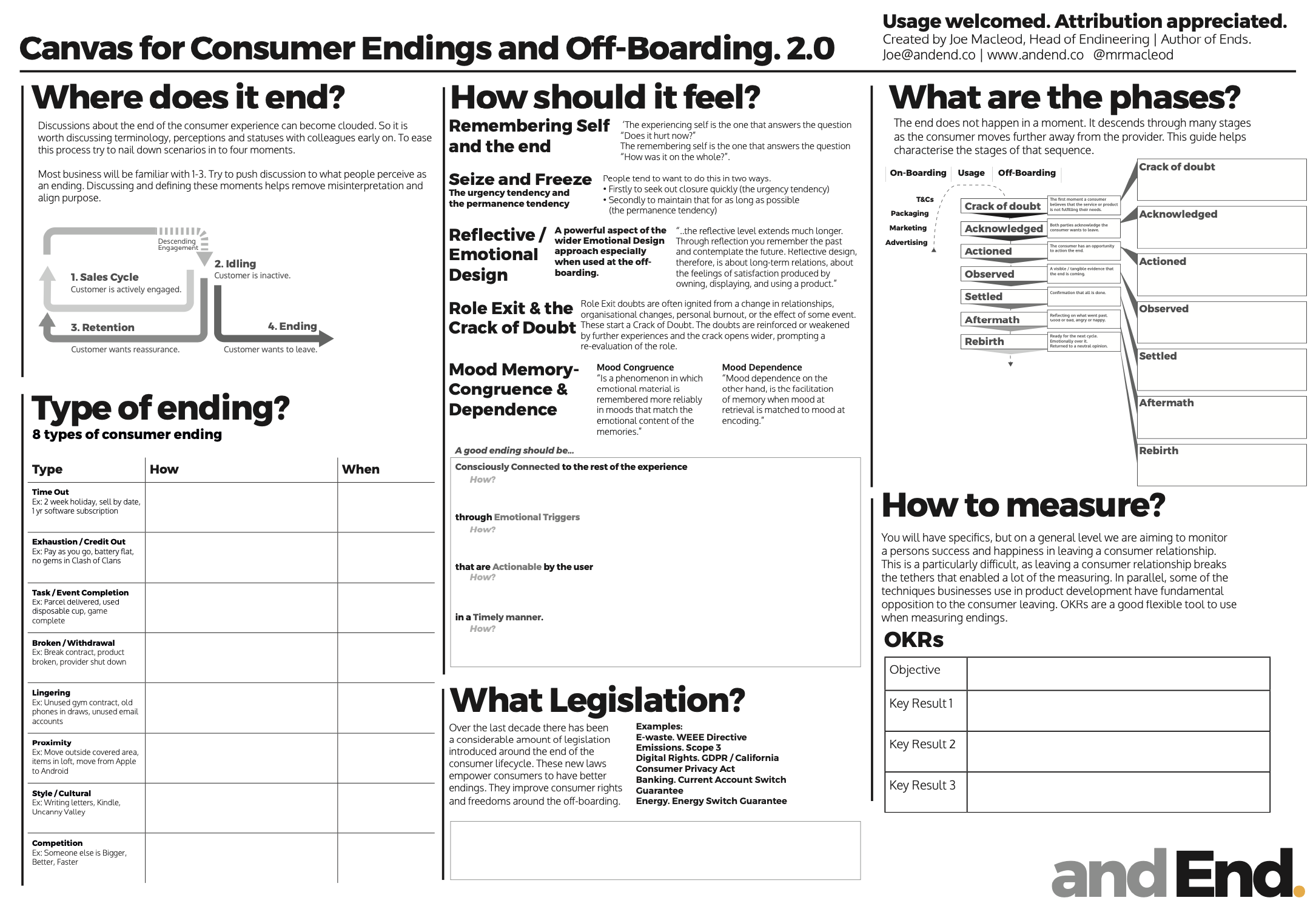Design Endings –
Designing consumption lifecycles that end as well as they begin
Course dates
27th and 28th of February
Schedule
Monday 27.02.2023, 09.30 am – 05.00 pm
(including 1 hour lunch break and 15 minutes break in the morning and in the afternoon)
Joe is flying in to Switzerland in the morning. Planned arrival is 11:30am. In the meantime we propose looking at these videos to familiarise yourself with the theme of Endineering.
09:30 - 11:30 am. Self Study time.
Watch videos.
1. History of Endings >here<
2. History of consumer experience >here<
3. The End Gap >here<
4. TEDx Talk about endings >here<
11:30 -12. Joe arrives. Introductions
11:30. The Aim at the End.
12:00. Lunch.
13:00. Types of ending + Exercise (90 mins)
14:30. <break>
14:45. Phases of the end + Exercise
16:15. Psychology + Exercise
17:00. END.
Tuesday 28.02.2022, 09.30 – 05.00 pm
(including 1 hour lunch break and 15 minutes break in the morning and in the afternoon)
09:30. Neutralise + Exercise
10:15. Measuring the end + Exercise
11:00. <break>
11:15. Emotional Impact.
12:00. Lunch
13:00. Crack of Doubt
14:00. Applying the approach. Part 1.
15:00. <Break>
15:15. Applying the approach. Part 2.
16:20. Present
16:50. Reflect
17:00. END
Presentation deck from the workshop is >here<
Course Feedback
This is a short questionnaire about the course (don’t worry about the word Cohort, the questions are the same for the regular course).
Questionnaire is >here<
We will be working from the Ends and Endineering book throughout this course.
Here are your free e-book copies of both.
Endineering book (2021)
Go here >
https://www.smashwords.com/books/view/1116883
Go to check out>
Enter code: XM24U
Ends book (2017)
Go here >
https://www.smashwords.com/books/view/744267
Go to check out>
Enter code: KA37U
Endineering Aim at the End.
A good consumer off-boarding experience should be…
Consciously connected to the rest of the experience
through emotional triggers
that are measurable
and actionable by the user.
It should identify and bond the consumer and provider together in mutual responsibility.
Its aim should be to neutralise the negative consequences of consumption.
It should be concluded in a timely manner and
avoid assets falling outside the consumer lifecycle.



